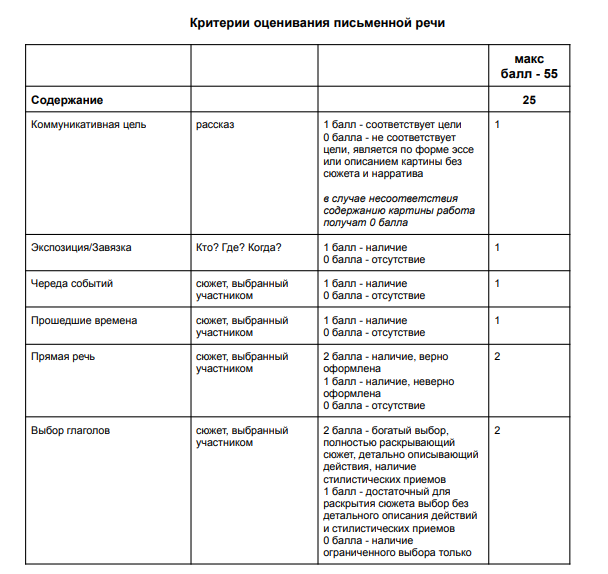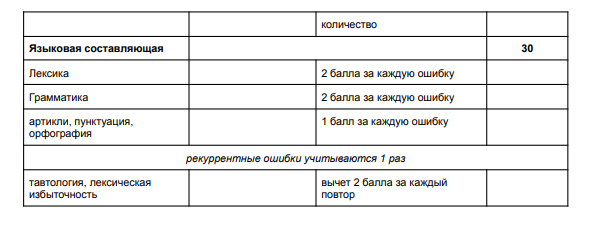Reading Comprehension
You are going to read an article on a movement in art. Read the text and answer the following questions.
American Tonalism was a progressive school of landscape art spanning 4 decades – from 1880 to 1920. The following twelve characteristics or stylistic modes encapsulate the evolution of the style over the forty odd years when Tonalism was at its height. These stylistic characteristics of Tonalism cover both visual components and visual emotions:
1) the use of subtle color tones comprised of various greens, purples, blues, and grays that are restful and easy on the eye;
2) Aesthetic Tonalism and Expressive Tonalism;
3) Stress on Symbolic Form;
4) the depiction of atmosphere (the unseen air);
5) a sense of movement or metamorphosis in nature (the vibration and refraction of tones);
6) the use of expressive paint handling to embody emotion or mimic the felt-life of nature;
7) the employment of formal strategies of embedded patterns and the decorative deployment of natural and abstract forms (derived from Whistler and influenced by Asian art), often used in conjunction with serial renderings of the same subject in different lights and from various angles of perception;
8) the use of soft-edged forms to further the sense of ambiguity and mystery of place (known as lost-edge technique in the nineteenth century);
9) an emphasis on the broad, graphic, ultimately abstract reading of major forms, producing an immediacy of emotional response to paintings, especially at a distance;
10) a predisposition for the elegiac poetry of landscape (reflecting the trauma of the Civil War);
11) the portrayal of a mystical organic relationship between perceiver and the perceived (the transcendentalist subjectivity espoused by Emerson and Thoreau);
12) a non-narrative synthetic art: an art about the feeling or mood evoked by the arrangement of landscape elements to project an emotion, rather than a realistic or representational depiction of a certain place.
These twelve characteristics of American Tonalism rarely if ever operated in isolation from one another, rather the opposite: in most cases, several or even all the characteristics can be seen to function seamlessly in a single work, whereby the emotional emphasis of the painting is tempered by the artistic choices among and balance between these various technical/stylistic options. What’s more, there is clearly overlap and blurring of affinities, just as in any work of art employing a range of colors that blend and bleed one into the other. Nevertheless, it is useful to try and tease out these various technical and stylistic strains because it adds to our understanding of how artistic choices shaped the Tonalist aesthetic and, most especially, the progressive nature of Tonalism and the deep cultural roots out of which the movement developed. Lastly, by systematically enumerating these characteristics, the synergy between them is grasped more concretely, a synergy that is further galvanized by the qualitative and cumulative technical choices made by individual artists, each with their unique strengths and proclivities.
Most importantly, a familiarity with these progressive characteristics, almost all without exception fundamental to the origins of modernism, will go a long way to educating young people about the historical bloodlines of contemporary art, and so better connect them into the deeper heritage of art history. Such an exploration will held develop an appreciation and understanding and—dare I say it, a level of connoisseurship sorely lacking among many of today’s collectors who have become overly dependent on digital images of artwork—quickly summoned and just as quickly dismissed—rather than long sessions of sweet, silent thought given over to contemplating actual artworks, and so fathoming their infinite complexity and the hard-won skills and singular visions of their creators.
I. For questions 1-4 choose the right answer and enter its letter.
1. Which of the following influential professionals does the text NOT refer to?
- A An artist
- B A poet
- C A naturalist
- D A statesman
Your answer:
2. Which of the following colours is NOT typical of Tonalist aesthetic?
- A Vermilion
- B Celadon
- C Mauve
- D Teal
Your answer:
3. The author believes that each feature of Tonalism
- A can be seen clearly in every Tonalist painting.
- B should be viewed only in combination with the others.
- C works towards creating the desired effect when used in harmony with the others.
Your answer:
4. The author believes that dissecting a work of art to reveal separate components and techniques used in it
- A enables people to get a perspective on a trend or style in art.
- B is a challenge that can be taken on only by mature critics of art.
- C is a waste of time because it’s impossible to see clear boundaries between the characteristics of a tonalist work.
Your answer:
Total Questions: 0
Incorrect Answers: 0
II. An AI based resource for generating images used a deep learning technique to process the following metaphoric words and phrases from the text. For questions 5-9 match the word/phrase with the corresponding image. The AI resource uses the literal meaning as the foundation for the image.
A.  B.
B.  C.
C. 
D.  E.
E. 
5. at its height
6. bleed into one another
7. tease something out
8. to be galvanized by
9. the historical bloodlines
Total Questions: 0
Incorrect Answers: 0
III. For questions 10-12 decide whether the statements are True if the statement agrees with the information, False if the statement does not agree with the information or Not Stated if there is no such information in the extract.
10. Tonalists usually depicted nature in a stasis.
11. The trendsetters for Tonalism were Russian painters.
12. There are some traits of oriental art in Tonalism.
Total Questions: 0
Incorrect Answers: 0
IV. For questions 13-15 fill the gaps with ONE word exactly the way it is used in the text.
13. What word in the text rhymes with shuttle?
14. What word in the text is the synonym of predisposition?
15. What word in the text is etymologically related to the word cognition?
Total Questions: 0
Incorrect Answers: 0
Grammar and vocabulary
V. You are going to read an extract from a story. For questions 1-15 choose one option for each gap.
Terry lumbered into the room, uncertain of his every step. He was so 1. (shaken/shook on) , he had to sit down. 2. (To be used/Having been used) to his absence, I didn’t even notice him. When I did, I thought it was incredible that he 3. (had been sat/had been sitting) right next to me all this time. He did not even make a single sound. He stood up again, looked at me and nodded towards the bedroom door.
“You’d like to wish good night to my sister, 4. (hadn’t/wouldn’t) you, Mr. Terry? Come in.”
I walked him down the hall. Miss Marple was sitting by Angela’s bed.
“Come on in, Terry,” she said. “She is very much asleep after all the medicine the doctor gave her so don’t worry – you won’t wake her up.”
Terry slowly approached the farthest corner of the room and just stood there 5. (poring/peering) at Angela from a distance. I had to take him by the hand and tug a little bit. Up came his hand and then again he let it 6. (drop/dropped) . He was shaking.
“You can pet her, Mr. Terry. She’s asleep. She wouldn’t allow you otherwise, so just pet her now.”
Down came his hand on Angela’s silky hair. .
This is when I realised I could understand his 7. (body/language) English. His hand clasped on mine, I understood that he was willing to leave. I led him to the porch. His uneasy steps halted. My hand still in his, he wouldn’t let go 8. (about/of) it.
“Walk me home,” he whispered as if he was just a child afraid of the dark.
I patiently escorted him to his house. He found the doorknob and gently released my hand. He entered the house, 9. (without/not) looking back, silently closed the door behind him, never 10. (saw/to be seen) again.
He was my neighbour. But not just any neighbour. He was a neighbour who saved my sister’s life.
Who would 11. (be/have) thought that we would make such a journey – from our utter disdain for Terry to our deepest gratitude to him now.
My Mum was right back then when she said you never really know someone until you stand in their 12. (boots/shoes) and walk around in them. I think even standing on Terry’s porch was quite enough.
I trod back home. It was raining and the street looked 13. (fuzzily/fuzzy) . I felt very old, as if decades had passed. I looked at the beads on the tip of my nose. Looking cross-eyed at the tip of your nose is 14. (no/not) easy task. It makes you dizzy. So I just quit. I thought how Angela would be mad at me for missing all this. She wouldn’t even speak to me. For days, no 15. (least/less) . And I also thought that Angela and I, after all this, had almost nothing left to learn. Maybe except geometry.
Total Questions: 0
Incorrect Answers: 0
Writing
You are going to write a story based on the following painting. But there is going to be a trick: you will be making up a story OPPOSITE of what is depicted in the painting.

The thing is, Fyodor Reshetnikov, a well-known Russian painter, was going to paint “Опять пятёрка” instead of the famous “Опять двойка” eventually thinking that the former would be lacking in any emotions or conflict worth depicting. Let’s experiment and prove him wrong.
Imagine that all the five characters are still present in the painting. However, both their appearance and emotional state are the opposite of the original. Moreover, there can be a conflict even if the main protagonist has been awarded another A at school. Let’s explore whose interests are jeopardized by this news.
Write your story in 200-220 words.
To write a successful competition story, make sure your story meets all the following requirements:
I. Story structure:
- Setting/exposition (WHO? WHEN? WHERE? Establish the context. Describe the location.)
- Chain of events (WHAT DID THEY DO? WHAT WERE THEY DOING? HOW WERE THEY FEELING? Add action and describe all the characters’ appearance and state. Build up tension arising from the conflict)
- Climax (This is where the interests clash, the tension is peaking)
- Anticlimax (This is where the conflict gets its resolution)
II. Language:
- Use vivid epithets in your description.
- Use a range of verbs and adverbs showing detailed actions.
- Use Direct Speech.
- Use past tenses.
PAY ATTENTION TO THE CRITERIA!



